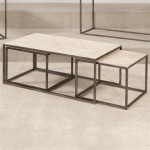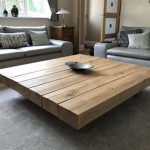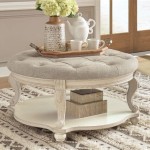What Causes A Glass Table To Shatter In The Middle Of Nowhere?
The sudden and unexpected shattering of a glass table, seemingly without any external force or obvious cause, can be a perplexing and even alarming event. While glass appears solid and durable, it is, in reality, a complex material susceptible to various stress factors that can accumulate over time, ultimately leading to catastrophic failure. Understanding the underlying causes of spontaneous glass breakage requires a closer examination of the material's properties, manufacturing processes, environmental conditions, and potential sources of stress concentration.
Several factors can contribute to the seemingly random shattering of a glass table. These factors are often interrelated and, acting in concert, can weaken the glass structure to a point where it can no longer withstand the internal and external pressures exerted upon it. Identifying the specific cause in any particular instance often requires careful examination of the broken fragments and an assessment of the table's history and environment.
Internal Stress and Manufacturing Imperfections
One of the primary reasons for spontaneous glass breakage is the presence of internal stress within the glass itself. This stress is often introduced during the manufacturing process, particularly during tempering. Tempering is a process where the glass is heated to a high temperature and then rapidly cooled. This process creates a compressive stress on the surface of the glass and tensile stress in the interior. Ideally, this balance of stresses makes the glass significantly stronger and more resistant to breakage than annealed (untreated) glass.
However, imperfections in the tempering process can lead to uneven stress distribution. Areas of high tensile stress, particularly near the edges or corners of the table, become weak points. Over time, these areas can become more susceptible to cracking and eventual failure. Microscopic flaws or inclusions within the glass, introduced during the manufacturing process, can also act as stress concentrators. These flaws, though often invisible to the naked eye, can significantly weaken the glass, making it more prone to shattering when subjected to even minor stresses.
Another common imperfection is the presence of nickel sulfide (NiS) inclusions. NiS is a crystalline compound that can be introduced into the glass batch during manufacturing. These inclusions can undergo a phase change over time, expanding and creating internal stress within the glass. Although relatively small, these inclusions can exert enough pressure to initiate a crack that propagates through the glass, leading to shattering. The likelihood of NiS inclusions causing issues is relatively low, but their presence is a known risk in tempered glass. Heat soaking, a process where tempered glass is held at a high temperature for an extended period, can accelerate the phase change of NiS inclusions and cause the affected glass to break during the soaking process. This process is designed to identify and remove potentially problematic pieces before they are installed.
Furthermore, inconsistencies in the glass composition itself can contribute to internal stress. Variations in the chemical makeup of the glass, even at a microscopic level, can create areas of differing thermal expansion coefficients. When the glass is subjected to temperature changes, these areas expand and contract at different rates, generating stress within the structure. This type of stress can be particularly problematic in larger glass tables, where the temperature differences across the surface are more pronounced.
Environmental Factors and External Stress
External stress, resulting from environmental factors, can also play a significant role in the spontaneous shattering of a glass table. Temperature fluctuations are a major contributor. As mentioned previously, glass expands and contracts with changes in temperature. If a glass table is exposed to significant temperature variations, such as direct sunlight on a cold day, differential expansion can create stress. This stress is particularly acute if the edges of the table are constrained by a frame or support structure, preventing free expansion and contraction.
Humidity levels can also indirectly contribute to glass breakage. High humidity can lead to corrosion of the glass surface, creating microscopic flaws that act as stress concentrators. Water can also seep into existing micro-cracks, and subsequent freezing can cause the cracks to expand, weakening the glass structure. Moreover, changes in atmospheric pressure, although typically subtle, can exert additional stress on the glass, especially if it contains pre-existing flaws or areas of high internal stress.
The way the glass table is supported also plays a critical role. Uneven support can create localized stress points. If the table is not evenly supported across its entire surface, certain areas will bear more weight than others. This unequal distribution of weight can lead to bending stress and, over time, crack propagation. The type of support material also matters. If the support material is too rigid or abrasive, it can exert excessive pressure on the glass, particularly at the contact points. Using softer, more compliant materials, such as rubber pads, can help distribute the load more evenly and reduce the risk of stress concentration.
Accidental impacts, even seemingly minor ones, can also initiate the fracturing process. A small chip or scratch on the edge of the glass can significantly weaken its structural integrity. These imperfections act as stress risers, concentrating external forces and making the glass more susceptible to cracking. Even vibrations from nearby traffic or construction can contribute to the accumulation of stress over time, especially if the table is already under some degree of internal or external stress. The repetitive vibrations can cause micro-cracks to propagate, eventually leading to catastrophic failure.
Age, Maintenance, and Human Error
The age of the glass table is also a relevant factor. Over time, glass can undergo a process called "static fatigue," where even relatively low levels of sustained stress can lead to crack growth. This process is accelerated by the presence of moisture and other environmental factors. The older the glass, the more likely it is to have accumulated microscopic flaws and areas of weakened structural integrity. Older glass may also be more prone to chemical degradation, further weakening its ability to withstand stress.
Improper cleaning and maintenance practices can contribute to glass deterioration. Abrasive cleaners or scouring pads can scratch the glass surface, creating microscopic flaws that act as stress concentrators. Harsh chemicals can also etch the glass, weakening its structural integrity. Using appropriate cleaning products and gentle cleaning techniques is vital for preserving the integrity of the glass surface.
Human error during installation or use can also lead to problems. Over-tightening screws or bolts during assembly can create excessive stress around the mounting points. Placing heavy objects unevenly on the table can also cause localized stress concentration. Similarly, moving the table improperly, such as by lifting it by one edge, can subject it to undue stress. Careful handling and proper assembly techniques are crucial for preventing damage to the glass table.
Selecting the appropriate type of glass for a table is also vital. Tempered glass is significantly stronger and more resistant to breakage than annealed glass. However, even tempered glass can shatter if subjected to excessive stress or if it contains internal flaws. Laminated glass, which consists of two or more layers of glass bonded together with an interlayer of plastic, is even more resistant to shattering. If one layer of glass breaks, the interlayer holds the fragments together, preventing them from scattering. The type of glass chosen should be appropriate for the intended use and the potential stresses it will be subjected to.
In summary, the shattering of a glass table in the middle of nowhere is rarely a random event. It is usually the result of a combination of factors, including internal stress from manufacturing imperfections, external stress from environmental factors, and the accumulation of stress over time. Understanding these factors can help individuals take steps to prevent spontaneous glass breakage and ensure the longevity of their glass furniture.

Everyday Life How And Why Would A Glass Table Break In This Manner Physics Stack Exchange

Everyday Life How And Why Would A Glass Table Break In This Manner Physics Stack Exchange
Mystery Behind Glass Table Spontaneously Exploding

Everyday Life How And Why Would A Glass Table Break In This Manner Physics Stack Exchange

Glass Tables Are Exploding Here S Why

Niverville Family Says Glass Table Exploded In Their Home Cbc News

Glass Tables Are Exploding Here S Why

Glass Tables Are Exploding Here S Why
Mystery Behind Glass Table Spontaneously Exploding

Glass Table Tops Can Suddenly Explode For No Specific Reason
Related Posts








